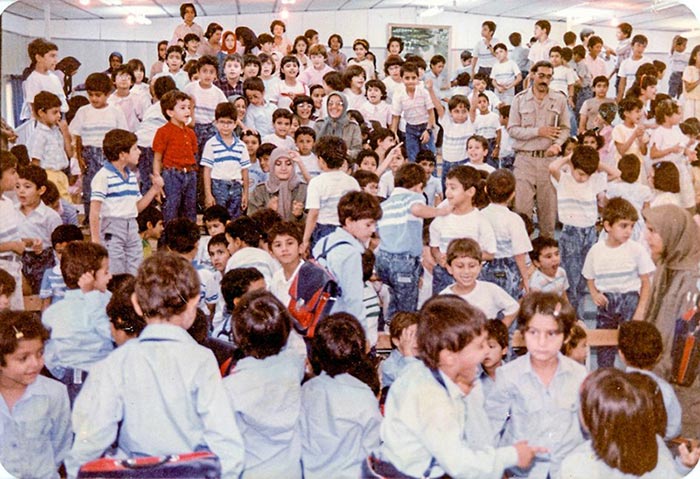The story of children of the Mujahedin Khalq is very similar to that of children in Residential schools for Indigenous children in Canada. The schools existed from the 17th century until the late 1990s. During the 19th and 20th centuries, a formal system for the residential schooling of Indigenous children was established and expanded throughout Canada.
The residential school system harmed Indigenous children significantly by removing them from their families, depriving them of their ancestral languages, and exposing many of them to physical and sexual abuse. Conditions in the schools led to student malnutrition, starvation, and disease. And, the children of Mujahed parents were separated from their parents under the order of Massoud Rajavi following the first Gulf war in 1991. the MEK’s children were removed from their families in Camp Ashraf, Iraq and were smuggled to European and North American countries.
The goal of Indian residential schools was to assimilate Indians into society. The Canadian government operated Indian residential schools in partnership with the Anglican, Catholic, Methodist, and Presbyterian churches, among others. However, the goal of Massoud Rajavi was to draw the maximum loyalty and love of Mujahed parents to his own personality.

children in Residential schools for Indigenous children in Canada
The recent discoveries of more than 1,300 unmarked graves at the sites of four former residential schools in western Canada have shocked and horrified Canadians. Indigenous peoples, whose families and lives have been haunted by the legacy of Canada’s Indian residential school system, have long expected such revelations. This is while, a few of the MEK’s former child soldiers dared to speak out about what they have endured in the Cult of Rajavi.
Residential school survivor testimony has long been filled with stories of students digging graves for their classmates, of unmarked burials on school grounds, and of children who disappeared in suspicious circumstances. Many of these stories were heard by the Truth and Reconciliation Commission of Canada (TRC), which was formed in 2008 and collected testimonies from over 6,750 survivors. The TRC’s 2015 Final Report made it quite clear that further recoveries of unmarked graves at the schools were inevitable.
Children between the ages of 4-16 attended Indian residential school while children of the MEK were between 2 months old to 14 years old when they were separated from their parents. Out of over 700 children, 300 were transferred back to Camp Ashraf Iraq, after they were coerced and officially recruited as soldiers of the MEK’s army. They were given military uniforms and they received military trainings at the age of 13 to 17.

MEK Child Soldiers
Although there are some testimonies given by certain former child soldiers of the MEK, no international foundation or human rights body like Truth and Reconciliation Commission has been established to collect the testimonies.
Amin Golmaryami’s stories was first published in the German newspaper, Die Ziet. His account of being a child soldier of Masoud and Maryam Rajavi’s army was then approved and contributed by other child soldiers of the group including Ray Torabi, Zhina Hossein Nezhad and Amir Yaghmai. They presented their testimonies on child abuse in the MEK cult in Club House platform. They spoke out about MEK’s team houses and foster houses for the children in Europe and North America. They are living eyewitnesses of sexual abuse, forced labor, mental and physical torture against children by the group commanders.
Together with several other former child soldiers, they stayed by the side of Amin Golamaryami when the MEK filed an appeal against Die Ziet magazine. Amin and Luisa Hommerich, the journalist who had interviewed him, won the court against the MEK.
However, their testimonies were not echoed by other news media. The crucial fact is that in modern age, hundreds of MEK children were subjected to modern slavery, child abuse and forced labor. At least two of them, named Yasser Akbarinasab and Alan Mohammadi were killed in the MEK’s child army. Alan was the first love of Amin Golmaryami. He noticed the news of Alan’s death in the MEK’s bulletin in Camp Ashraf when they were both child soldiers of the MEK.
The atrocities of the MEK leaders against the children of their own members should be considered as important as victims of Residential schools for Indigenous children in Canada. The MEK leaders who ordered the separation and the MEK commanders who harassed the children both in team houses and Camp Ashraf should be tried in a fair international court.
By Mazda Parsi

